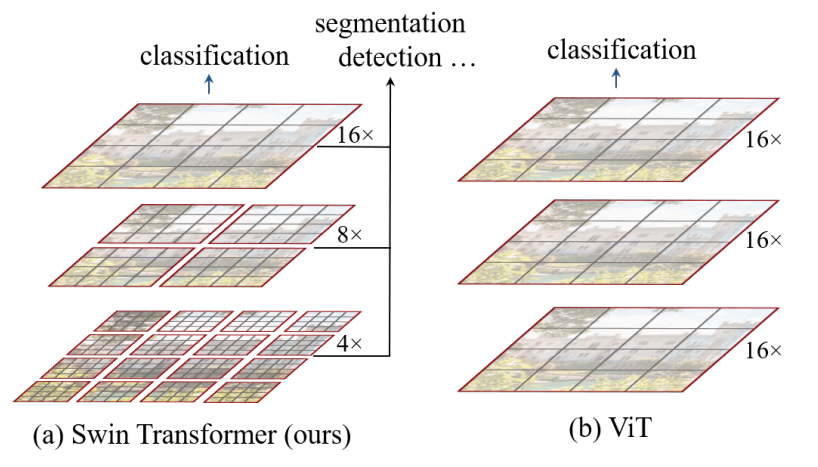🚀 Swin Transformer (large-sized model)
The Swin Transformer model is trained on ImageNet-1k at a resolution of 224x224. It offers a novel approach for image classification and dense recognition tasks.
🚀 Quick Start
The Swin Transformer model is pre - trained on the ImageNet - 1k dataset at a resolution of 224x224. It was first introduced in the paper Swin Transformer: Hierarchical Vision Transformer using Shifted Windows by Liu et al. and initially released in [this repository](https://github.com/microsoft/Swin - Transformer).
Disclaimer: The team releasing Swin Transformer did not write a model card for this model, so this model card has been written by the Hugging Face team.
✨ Features
The Swin Transformer is a type of Vision Transformer. It constructs hierarchical feature maps by merging image patches (shown in gray) in deeper layers. Due to the computation of self - attention only within each local window (shown in red), it has linear computation complexity in relation to the input image size. This allows it to serve as a general - purpose backbone for both image classification and dense recognition tasks. In contrast, previous vision Transformers generate feature maps of a single low resolution and have quadratic computation complexity in relation to the input image size because of global self - attention computation.

Source
📚 Documentation
Intended uses & limitations
You can use the raw model for image classification. Check out the model hub to find fine - tuned versions for tasks that interest you.
How to use
Here is a basic example of using this model to classify an image from the COCO 2017 dataset into one of the 1,000 ImageNet classes:
from transformers import AutoFeatureExtractor, SwinForImageClassification
from PIL import Image
import requests
url = "http://images.cocodataset.org/val2017/000000039769.jpg"
image = Image.open(requests.get(url, stream=True).raw)
feature_extractor = AutoFeatureExtractor.from_pretrained("microsoft/swin-large-patch4-window7-224")
model = SwinForImageClassification.from_pretrained("microsoft/swin-large-patch4-window7-224")
inputs = feature_extractor(images=image, return_tensors="pt")
outputs = model(**inputs)
logits = outputs.logits
predicted_class_idx = logits.argmax(-1).item()
print("Predicted class:", model.config.id2label[predicted_class_idx])
For more code examples, refer to the documentation.
BibTeX entry and citation info
@article{DBLP:journals/corr/abs-2103-14030,
author = {Ze Liu and
Yutong Lin and
Yue Cao and
Han Hu and
Yixuan Wei and
Zheng Zhang and
Stephen Lin and
Baining Guo},
title = {Swin Transformer: Hierarchical Vision Transformer using Shifted Windows},
journal = {CoRR},
volume = {abs/2103.14030},
year = {2021},
url = {https://arxiv.org/abs/2103.14030},
eprinttype = {arXiv},
eprint = {2103.14030},
timestamp = {Thu, 08 Apr 2021 07:53:26 +0200},
biburl = {https://dblp.org/rec/journals/corr/abs-2103-14030.bib},
bibsource = {dblp computer science bibliography, https://dblp.org}
}
📄 License
This model is released under the Apache - 2.0 license.
| Property |
Details |
| Model Type |
Swin Transformer (large - sized model) |
| Training Data |
ImageNet - 1k |
| Tags |
vision, image - classification |
| Widget Examples |
Tiger, Teapot, Palace |

